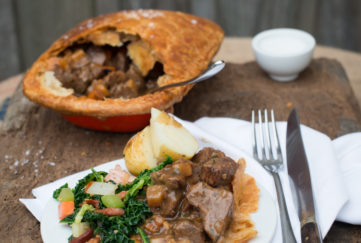Buyer Beware!

Before we had legislation to protect consumers – and the technology to test food for unsafe additives quickly and easily – it was definitely a case of “buyer beware”.
“Almost everything we eat and drink and much of what we wear, is adulterated.”
No, that’s not fake news, but an extract from an article called “Faked Foods: How We Are Swindled Daily” from the “Friend” issue dated October 3, 1904.
Part of the research for our 150th-anniversary issue
I came across it when researching for our souvenir anniversary issue. It was one of the many fascinating items we simply didn’t have room to include there, but I’d like to share it with you now.
“A large part of the profits of many trades is earned by frauds on customers,” the writer says. “This may seem a hard saying, but the truth of it can be proved. Milk is perhaps the commonest food, next to bread, and the frauds in milk are colossal. … It is a mistake to suppose that chalk and other substances are introduced, but it is a fact that milk is coloured to make it sell as yellow and rich, for the Londoner has a firm belief that milk and butter are naturally yellow. Of course, they are nothing of the sort, so the milk dealer puts in a mixture called ‘annatto’ to colour it to the customer’s taste, and often he brings it to the desired tint with aniline dye. Then, to make it keep, he puts in formalin, and unfortunately these things have a very bad effect on digestion.”
You could well imagine the upsets that might result from drinking dye-and-formaldehyde-laced milk. More seriously, the report goes on to say that adulterated milk had led to a number of infant deaths.
Look closely at labels
A number of common swindles of the time were well known. The writer talks about cotton seed oil being used in place of olive oil, beetroot for the more expensive sasparilla. Your jar of honey back then might have been nowhere near any self-respecting bee, but rather mixed in a vat using starch, glucose, potatoes and vitriol to produce a jar of sweet, sticky stuff that would pass for the real thing.
We might complain about “red tape” today, but it’s easy to forget that many regulations were put in place to sort out dodgy dealings around food that were quite common and often dangerous. It looks like our “Friend” readers in 1904 had to be alert shoppers to stay well. We’re lucky these days to have such a wide variety of easily available, safe food to buy.
It was lovely to visit the past in those magazines from long ago, but I think I prefer to do my food shopping in the present!





